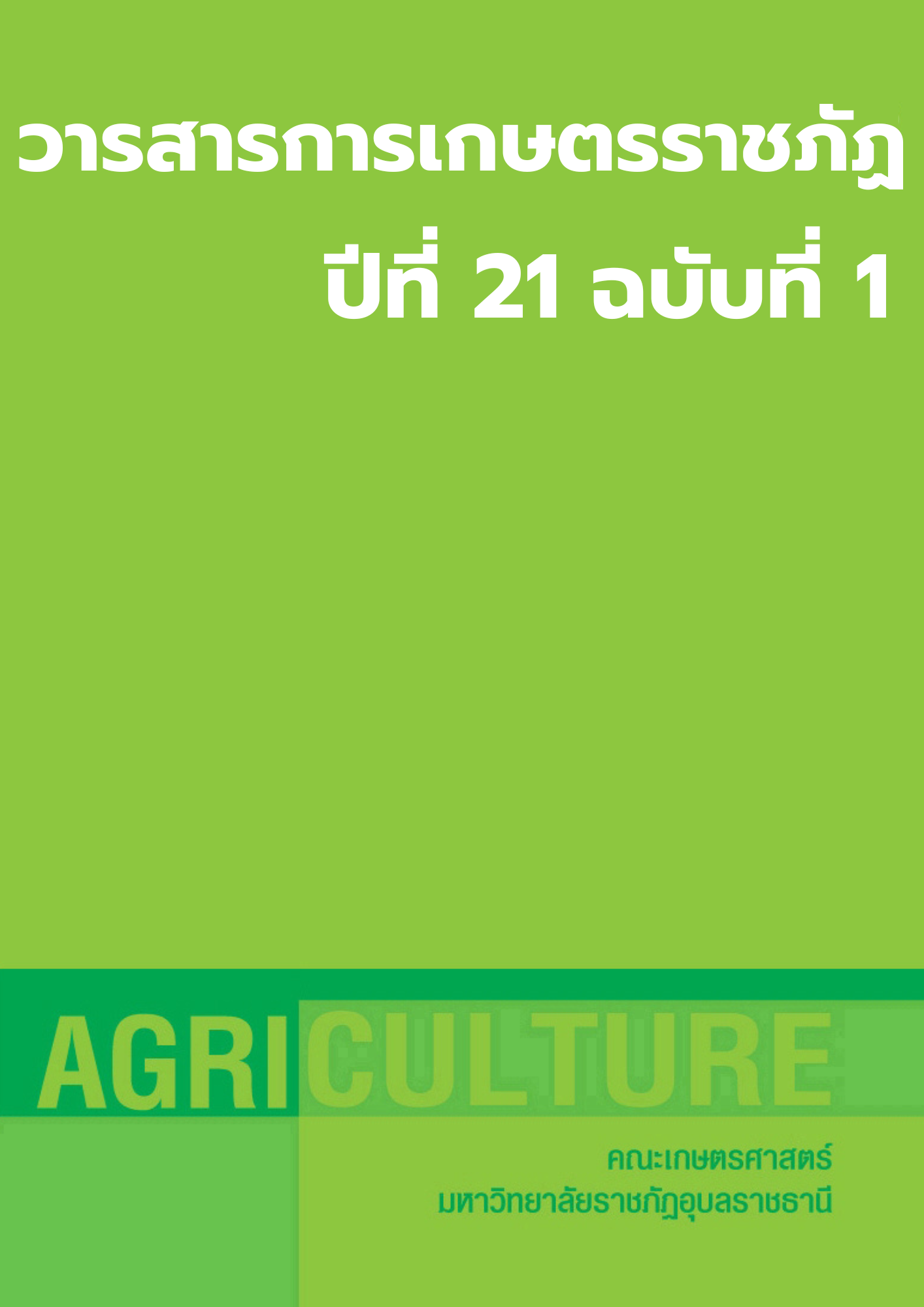Influence of pulsing and ethanol on flower quality and vase life of cut chrysanthemum (Dendranthema grandiflora Tzvelev.) อุบล ชินวัง วรรณพร ดวงพัตรา และสุภาภรณ์ จันพวง
Main Article Content
Abstract
Study on flower quality and vase life of standard type cut chrysanthemum produced from Ubon Ratchathani was undertaken in the 2020 production season using two experiments. The first experiment was to determine the effect of sucrose pulsing at 0 (distilled water), 5, 10 and 15% concentrations for 4 hours on ‘Rivalry’ and ‘Kaosnow’ cut chrysanthemums before holding in distilled water (pH 6.29) at ambient condition (22.8°C and 71.1% relative humidity [RH]). The second one was to investigate the effectiveness of ethanol (0.5 & 1.0%) and/or 5% sucrose solutions as holding solutions of ‘Rivalry’ cut chrysanthemum, compared to distilled water (control) at ambient temperature (24.9°C and 72.4% RH). The result of the first experiment showed that there were no significant differences (P>0.05) among treatments of sucrose pulsing of ‘Rivalry’ flowers in flower quality (petal freshness and flower diameter), water uptake and vase life (19.40-19.75 days), compared to distilled water (20.00 days). However, all of the sucrose pulsing of ‘Kaosnow’ flowers markedly increased flower diameter during the first duration of the vase period, without a significant difference in vase life (15.90-17.70 days). The pulsed ‘Kaosnow’ flowers had less vase life than ‘Rivalry’ flowers (16.73 and 19.71 days, respectively). The following study of ‘Rivalry’ flowers was conducted using 0% sucrose pulsing for 4 hours before holding the flower in various holding solutions (ethanol and/or sucrose). The flowers of both ethanol solutions had higher volume of water uptake than the control and the other holding solutions. The flowers exhibited greater (P£0.01) quality of petal freshness and flower diameter, and had more (P£0.05) vase life (averagely 18.85 days) than the control (16.30 days) and the sucrose solutions with or without ethanol (13.10, 13.00 and 12.90 days, respectively). In addition, the flower stem end of 6 cm length of both ethanol treatments showed minimum contamination of the microorganisms.


